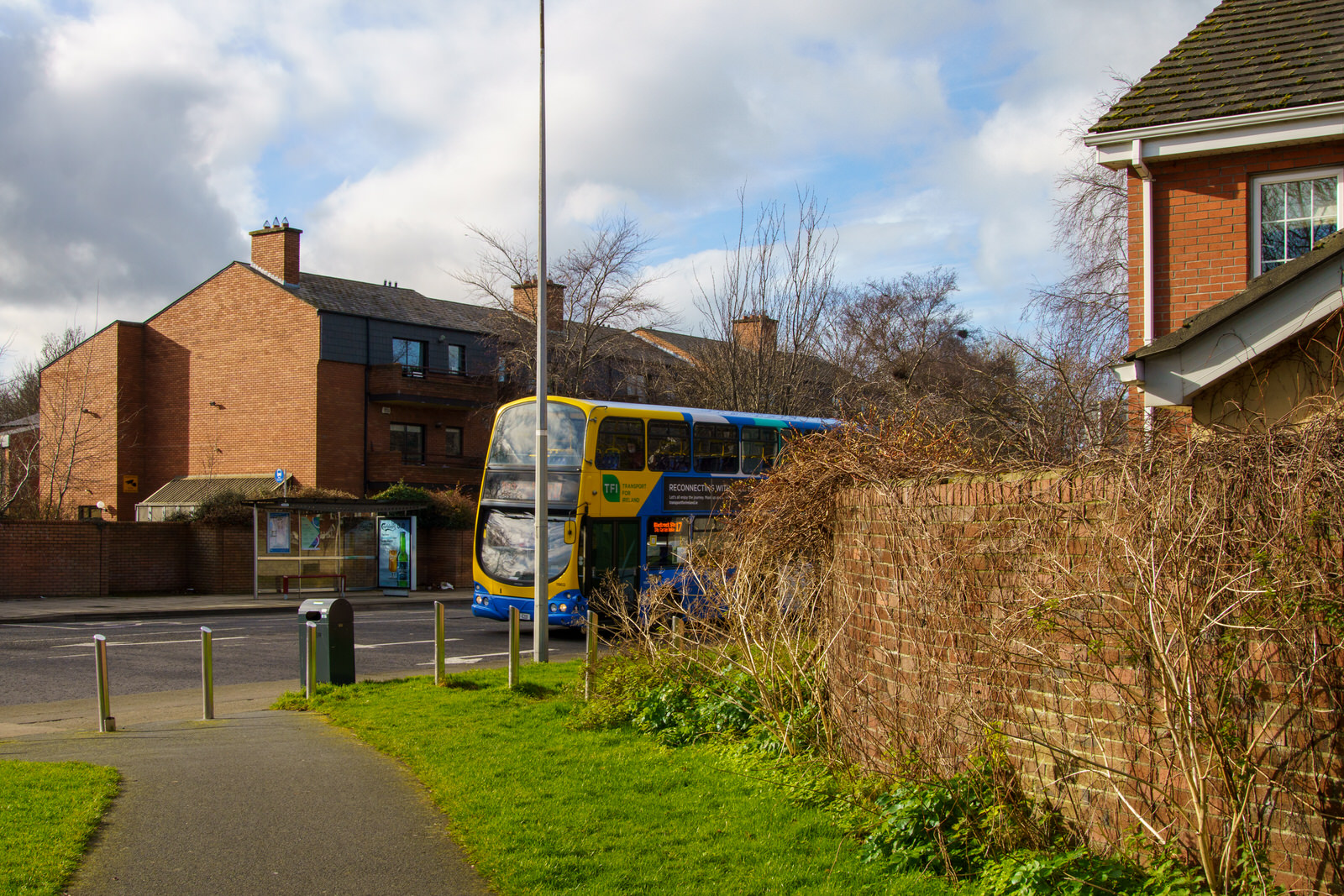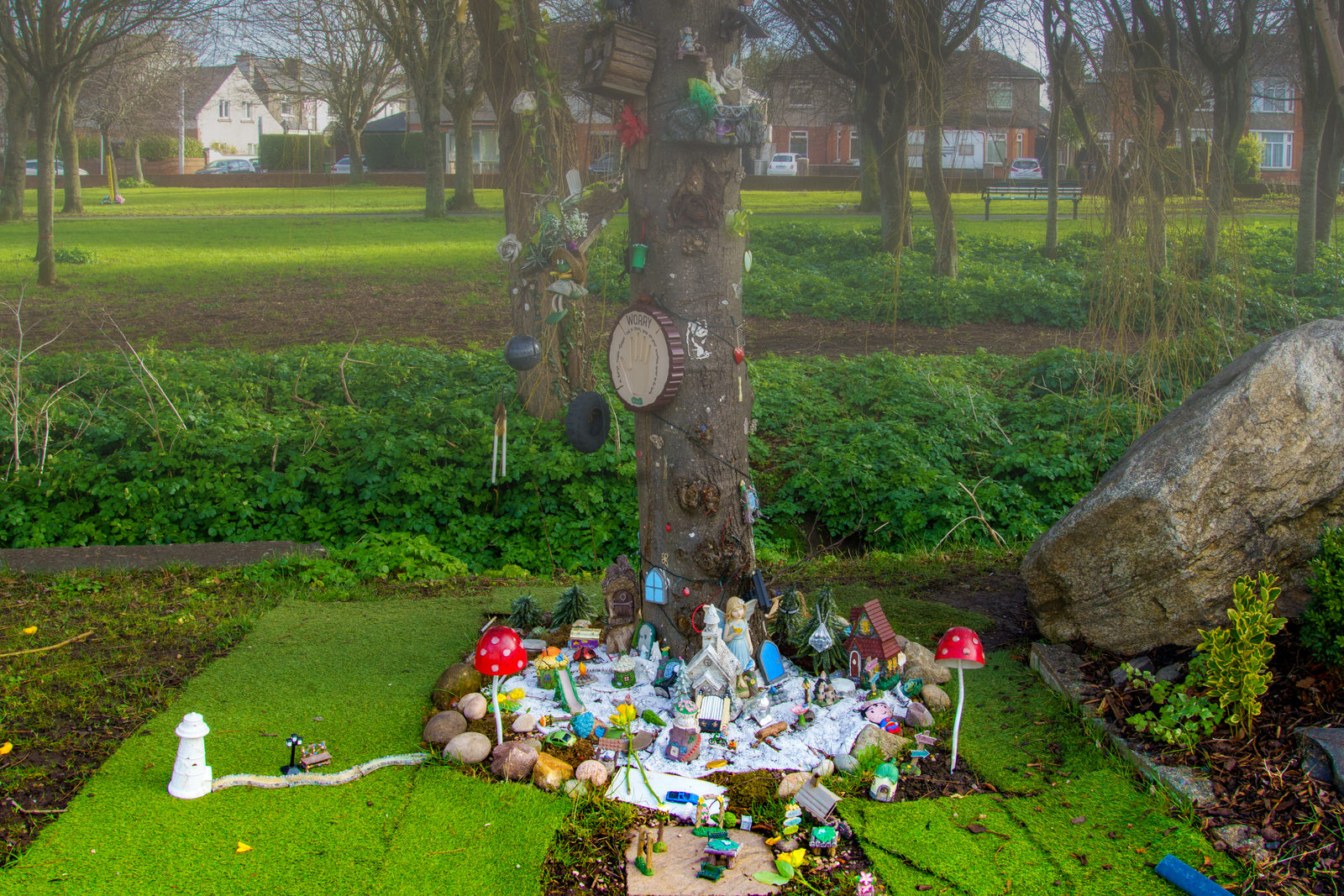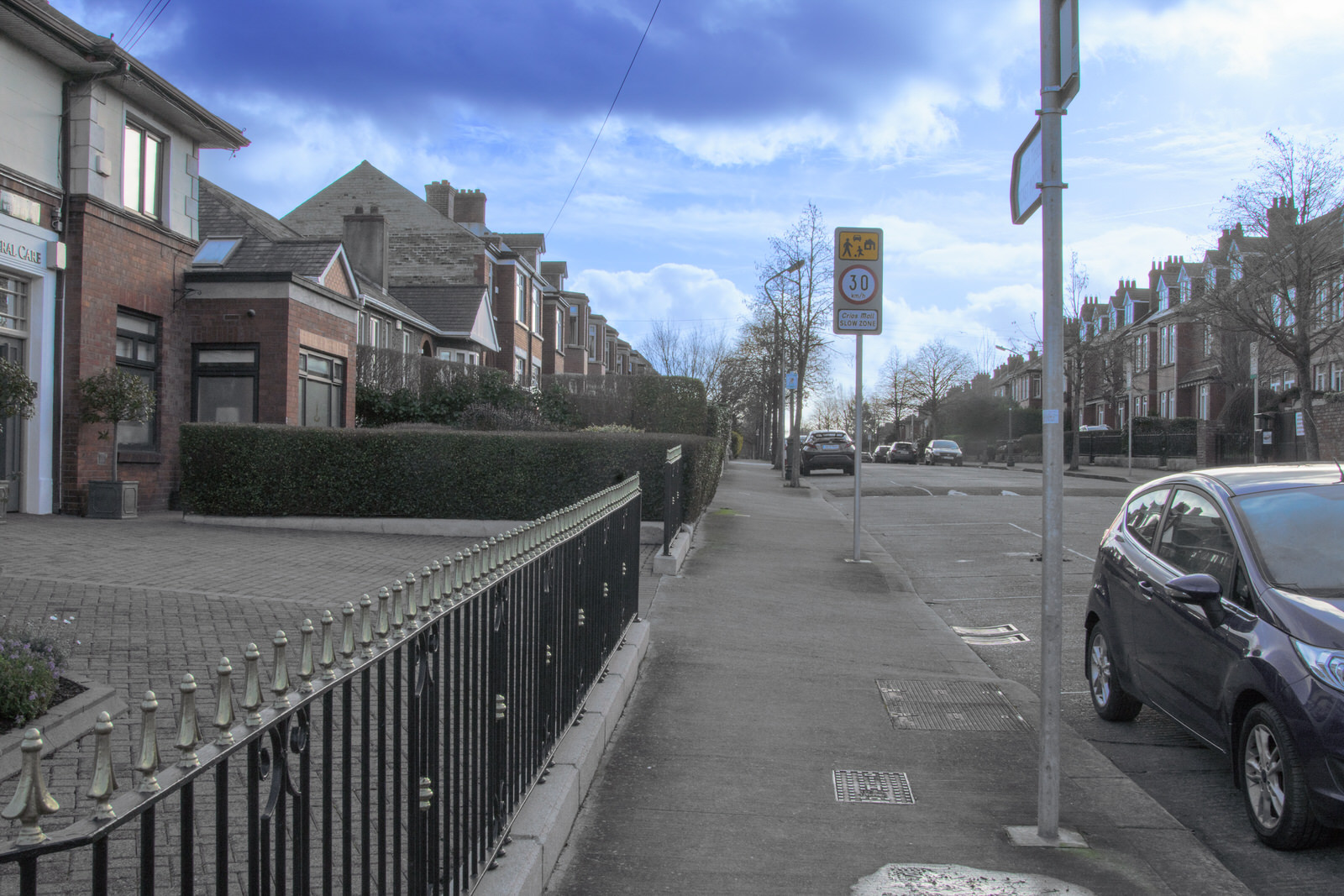KIMMAGEAREAS OF DUBLIN
Kimmage is to the south of Dublin city centre, outside the ring of canals, but before the M50 ring motorway or the Dublin mountains. It is surrounded by Crumlin, Greenhills, Harold's Cross, Rathfarnham, Templeogue and Terenure. Kimmage is divided between postal districts Dublin 12 and Dublin 6W.
The KCR, or Kimmage Cross Roads, is a landmark in Kimmage. The crossroads are considered, by some, to denote the southern boundary with Terenure, intersecting Terenure Road West, Kimmage Road West, Fortfield Road and the Lower Kimmage Road. The KCR is also the location of a petrol station and a convenience shop built in the 1960s.
The KCR Pub is located close to the KCR. The Stone Boat, named for the feature which separated the Poddle from the City Watercourse, is also a local bar and lounge. The Four Provinces (formerly the Black Horse Inn) on Ravensdale Park was opened in 2019 by the local microbrewery Four Provinces Brew Company. The main shopping area is Kimmage village on the Lower Kimmage Road. The SuperValu shopping centre on Sundrive Road has 12 shops.
At one side of the area is Kimmage Manor, the former location of The Holy Ghost Fathers College which prepared priests for the religious life, later hosting the Kimmage Development Studies Centre. Kimmage Manor Church parish church is on its grounds, and the main building holds the provincial office of the Spiritan order.
Larkfield, an old mill and farm in Kimmage owned by the family of Joseph Plunkett, was used as a clearing station for arms imported in the 1914 Howth gun-running for use in the 1916 Easter Rising. An Irish Volunteers secret camp, the Kimmage Garrison, was established by Plunkett and his brother George Oliver Plunkett. IRB members with engineering skills came from England and Scotland and lived rough for three months while they manufactured bombs, bayonets and pikes for the coming Easter Rising on the site that is now the SuperValu shopping centre.
On Easter Monday, 1916, Captain George Plunkett waved down a tram with his revolver at Harold's Cross, ordered on his volunteers armed with shotguns, pikes and homemade bombs, took out his wallet and said "Fifty-two tuppenny tickets to the city centre please". The group went to Liberty Hall before being organised into four companies, and with the other volunteers, marched to seize the General Post Office.
In the late 1940s and early 1950s, the park facing the end of Stannaway Road was known locally as the 'Tip'. The Tip had a water-filled quarry which froze over in the winter. In one tragic incident, three children drowned when they fell through thin ice and died.
The Poddle fed the millrace at the end of the pond in the grounds of the nearby monastery of Mount Argus. In the 1950s and 1960s, this two-storey building housed St Gabriel's Boys Club, which was well supported by the local community when they staged Gilbert and Sullivan operettas.
The residential area between Ferns Road and Kildare Road was architecturally designed in the shape of a Celtic Cross, with a mirror image each side of Armagh Road. Locally this road was considered as dividing Crumlin and Kimmage. The majority of these roads were named after mediaeval monasteries such as Clonmacnoise, Clonard, Kells and Monasterboice. Stannaway Road originally ran from Sundrive Road, up to and just beyond Cashel Road, where the scheme ended with a wall across the roadway that was demolished in the 1940s/1950s when an extension to the original scheme commenced. Blarney Park also had a similar wall separating the Dublin Corporation houses from a private scheme. In the 1950s, residents in the Corporation houses objected to being cut off and broke a hole through. The hole was gradually made larger and the Corporation deemed the wall unsafe and eventually demolished it. Access through the private section then became the norm. The Corporation devised a privatisation policy in the 1970s and sold council homes to the existing tenants. Captain's Road (previously Captain's Lane) runs from the top of Windmill Road in Crumlin to Kimmage Road. There were only a few houses between the schools (St Columcille CBS and the girls' convent opposite) on Armagh Road and St Agnes Church.
PODDLE PARK AND RAVENSDALE DRIVE AND NEARBYKIMMAGE AREA OF DUBLIN
Six, modern, fairy trees [or fairy grottos] have appeared in the Crumlin and Kimmage areas of Dublin since the arrival of lockdowns in 2020. They are located at Ravensdale Drive, St Martins Drive/Bangor Road, Clogher Road, Cashel Road Clonmacnoise Green and O’ Dwyer Road, these fairy trees are related to lockdown and the fairies come every few nights to keep an eye on the trees and to ensure the trees are being looked after by the local children. Before the end of the month I hope to locate and photograph the other five trees.
Traditionally fairies are connected with the Irish traditional belief in the Otherworld. Fairy forts and hawthorn trees, also known as fairy trees, are places where fairies are thought to reside. Thus, to tamper with these sites is seen as hugely disrespectful to the fairies. There are several trees sacred to Ireland, but the lone hawthorn (aka the "may" tree) is particularly considered a fairy haunt, and patches underneath where the grass have worn down are reputed to be due to fairies dancing. Though literary fiction more than folklore, two consecutive poems by Samuel Ferguson, "The Fairy Thorn" and "The Fairy Well of Lagnanay" describes the lone Fairy Hawthorn (The Whitethorn).
ONE OF SIX FAIRY TREESTHIS ONE IS AT RAVENSDALE DRIVE
Six, modern, fairy trees [or fairy grottos] have appeared in the Crumlin and Kimmage areas of Dublin since the arrival of lockdowns in 2020. They are located at Ravensdale Drive, St Martins Drive/Bangor Road, Clogher Road, Cashel Road Clonmacnoise Green and O’ Dwyer Road, these fairy trees are related to lockdown and the fairies come every few nights to keep an eye on the trees and to ensure the trees are being looked after by the local children. Before the end of the month I hope to locate and photograph the other five trees.
Traditionally fairies are connected with the Irish traditional belief in the Otherworld. Fairy forts and hawthorn trees, also known as fairy trees, are places where fairies are thought to reside. Thus, to tamper with these sites is seen as hugely disrespectful to the fairies. There are several trees sacred to Ireland, but the lone hawthorn (aka the "may" tree) is particularly considered a fairy haunt, and patches underneath where the grass have worn down are reputed to be due to fairies dancing. Though literary fiction more than folklore, two consecutive poems by Samuel Ferguson, "The Fairy Thorn" and "The Fairy Well of Lagnanay" describes the lone Fairy Hawthorn (The Whitethorn).
LOWER KIMMAGE ROADSTREETS OF DUBLIN
I walked from the High Cross at Harold's Cross to the KCR on the 9th February 2022 and photographed some of what I saw on the way.
The KCR, or Kimmage Cross Roads, is a landmark in Kimmage. The crossroads are considered, by some, to denote the southern boundary with Terenure, intersecting Terenure Road West, Kimmage Road West, Fortfield Road and the Lower Kimmage Road. The KCR is also the location of a petrol station and a convenience shop built in the 1960s.
Commercial DisclosurePLEASE NOTE THAT LINKS BELOW MAY REDIRECT YOU TO THE AMAZON LOCATION MOST LIKELY TO SHIP TO YOUR ADDRESS
You will find links to buy products from Amazon, Google and other partners. If you click on these links, you’ll find that the URL includes a small extra piece of text which identifies that the click came from my websites. This text is an affiliate code, and it means that I get a small percentage of the money you spend if you choose to buy that product, or, in some cases, other products from the site soon after. These affiliate links help pay the costs of producing my websites and ensure that the content is free to you.

Zeiss Batis 85mm f/1.8 Lens for Sony E Mount, Black
I HAVE THIS AND THE 135mm LENS
VERSATILE FULL-FRAME LENS: The powerful lens for the mirrorless full-frame system of Sony fulfills the highest requirements. Despite its compact design, the image meets the expectations of professional photographers. EXCELLENT RESOLUTION AND HIGH CONTRAST: Richly saturated and vivid colours are a must in the creation of lasting impressions. However, stray light within an optical system leads to a lightening of the image that is particularly noticeable in the shadows. This reduces image contrast, with the result that exposures lack contrast and appear faded. To avoid this, ZEISS combines various specially developed technologies to reduce the undesirable effects of stray light. ROBUST AND WEATHERPROOF METAL CONSTRUCTION: Thanks to features that are designed to keep out dust and spray water, the lens is perfectly suited for critical outdoor conditions. It is also designed for many years of intensive use. SMOOTH AND RELIABLE AUTOFOCUS: The design of the autofocus system requires an extremely accurate shifting of particular lens groups. The focusing system of ZEISS lenses is designed to ensure a robust and smooth-running autofocus mechanism with the best imaging performance.
YOU SHOULD ALSO CONSIDER THE 25mm LENS



